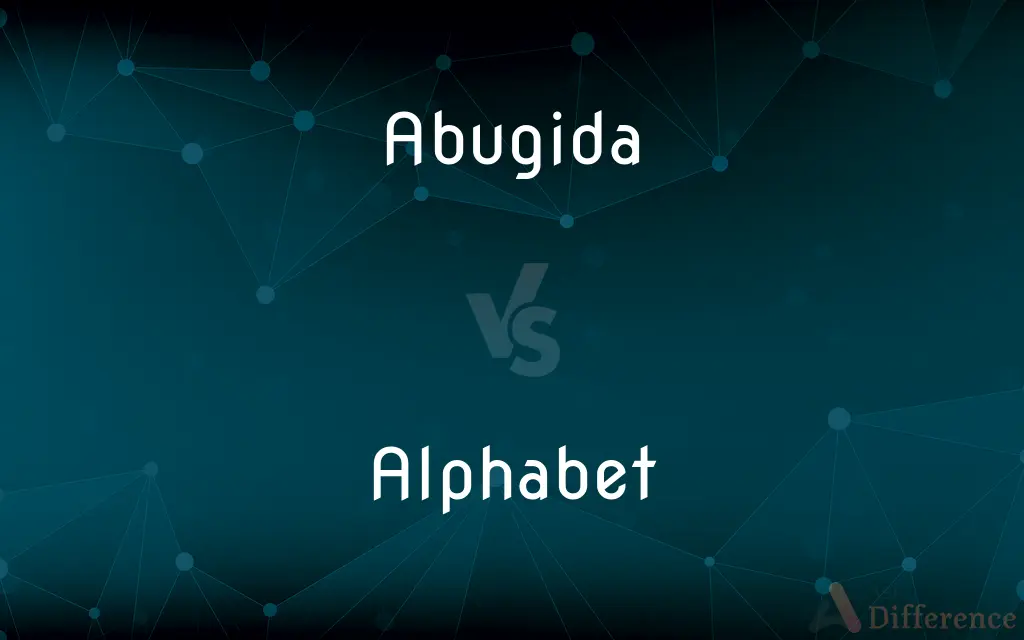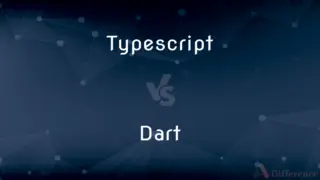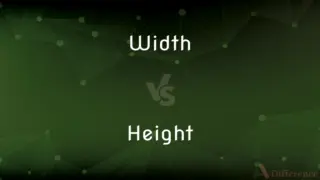Abugida vs. Alphabet — What's the Difference?

Difference Between Abugida and Alphabet
ADVERTISEMENT
Compare with Definitions
Abugida
An abugida ( (listen), from Ge'ez: አቡጊዳ), sometimes known as alphasyllabary, neosyllabary or pseudo-alphabet, is a segmental writing system in which consonant-vowel sequences are written as units; each unit is based on a consonant letter, and vowel notation is secondary. This contrasts with a full alphabet, in which vowels have status equal to consonants, and with an abjad, in which vowel marking is absent, partial, or optional (although in less formal contexts, all three types of script may be termed alphabets).
Alphabet
An alphabet is a standardized set of basic written symbols or graphemes (called letters) that represent the phonemes of certain spoken languages. Not all writing systems represent language in this way; in a syllabary, each character represents a syllable, for instance, and logographic systems use characters to represent words, morphemes, or other semantic units.The first fully phonemic script, the Proto-Canaanite script, later known as the Phoenician alphabet, is considered to be the first alphabet, and is the ancestor of most modern alphabets, including Arabic, Cyrillic, Greek, Hebrew, Latin, and possibly Brahmic.
Abugida
(linguistics) A kind of syllabary (syllabic alphabet) in which a symbol or glyph representing a syllable contains parts representing a vowel and a consonant, such that symbols for syllables not including the default vowel are generated by adding a common notation to indicate the vowel that it does include.
Alphabet
The letters of a language, arranged in the order fixed by custom.
Abugida
(linguistics) A kind of syllabary (syllabic alphabet) in which a symbol or glyph representing a syllable contains parts representing a vowel and a consonant, typically such that symbols for different syllables are generated by adding, altering or removing the vowel portion, often by applying a diacritic to a stable consonant symbol.
ADVERTISEMENT
Alphabet
A system of characters or symbols representing sounds or things.
Alphabet
A set of basic parts or elements
"genetic markers ... that contain repeated sequences of the DNA alphabet"(Sandra Blakeslee).
Alphabet
The set of letters used when writing in a language.
The Greek alphabet has only twenty-four letters.
In the first year of school, pupils are taught to recite the alphabet.
Alphabet
A writing system in which letters represent phonemes. Contrast e.g. logography, a writing system in which each character represents a word, and syllabary, in which each character represents a syllable.
Alphabet
A writing system in which there are letters for the consonant and vowel phonemes. Contrast e.g. abjad.
Alphabet
(computer science) A typically finite set of distinguishable symbols.
Let be a regular language over the alphabet .
Alphabet
An individual letter of an alphabet; an alphabetic character.
Alphabet
The simplest rudiments; elements.
Alphabet
An agent of the FBI, the CIA, or another such government agency.
Alphabet
(rare) To designate by the letters of the alphabet; to arrange alphabetically.
Alphabet
The letters of a language arranged in the customary order; the series of letters or signs which form the elements of written language.
Alphabet
The simplest rudiments; elements.
The very alphabet of our law.
Alphabet
To designate by the letters of the alphabet; to arrange alphabetically.
Alphabet
A character set that includes letters and is used to write a language
Alphabet
The elementary stages of any subject (usually plural);
He mastered only the rudiments of geometry
Share Your Discovery

Previous Comparison
Typescript vs. Dart
Next Comparison
Width vs. Height














































